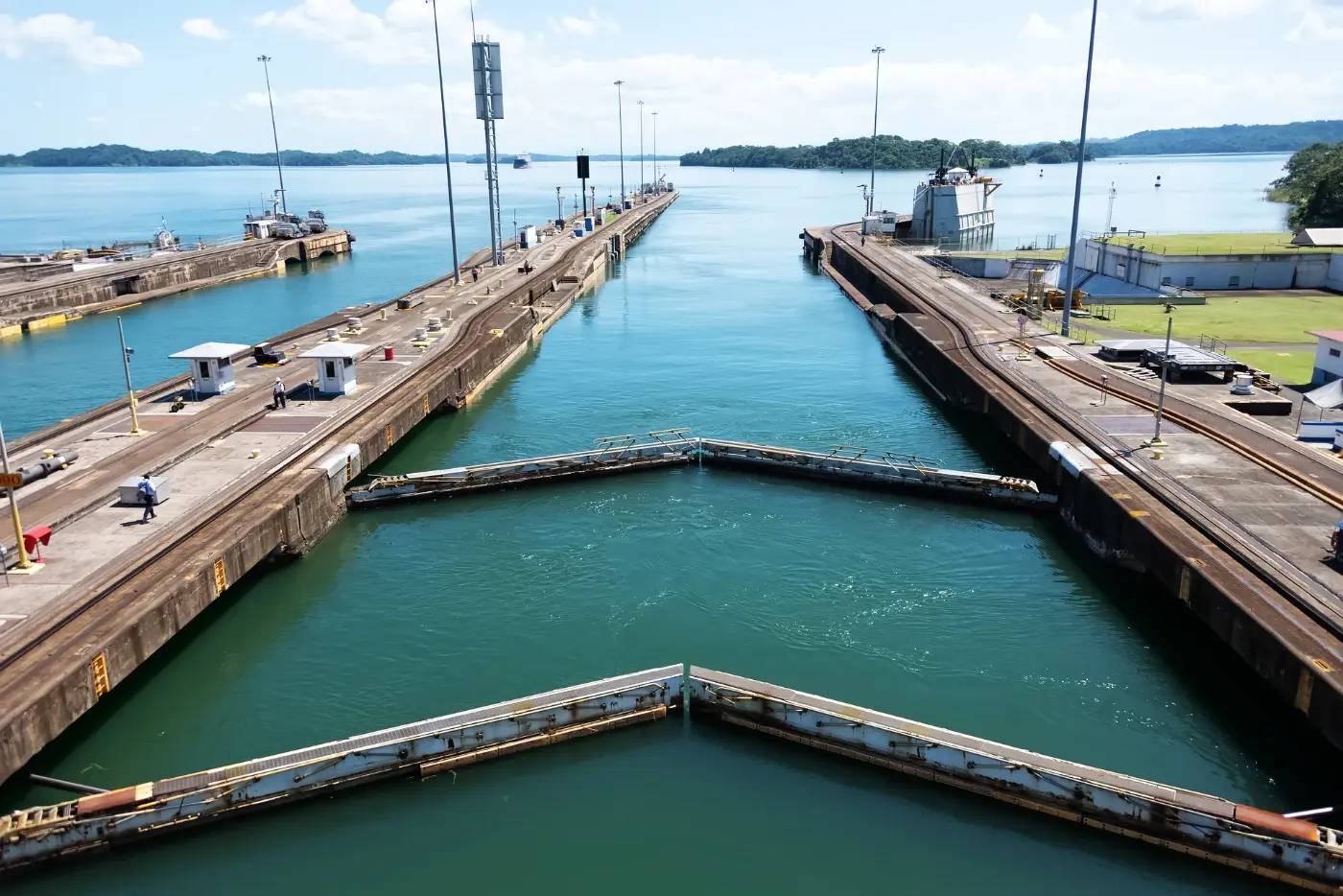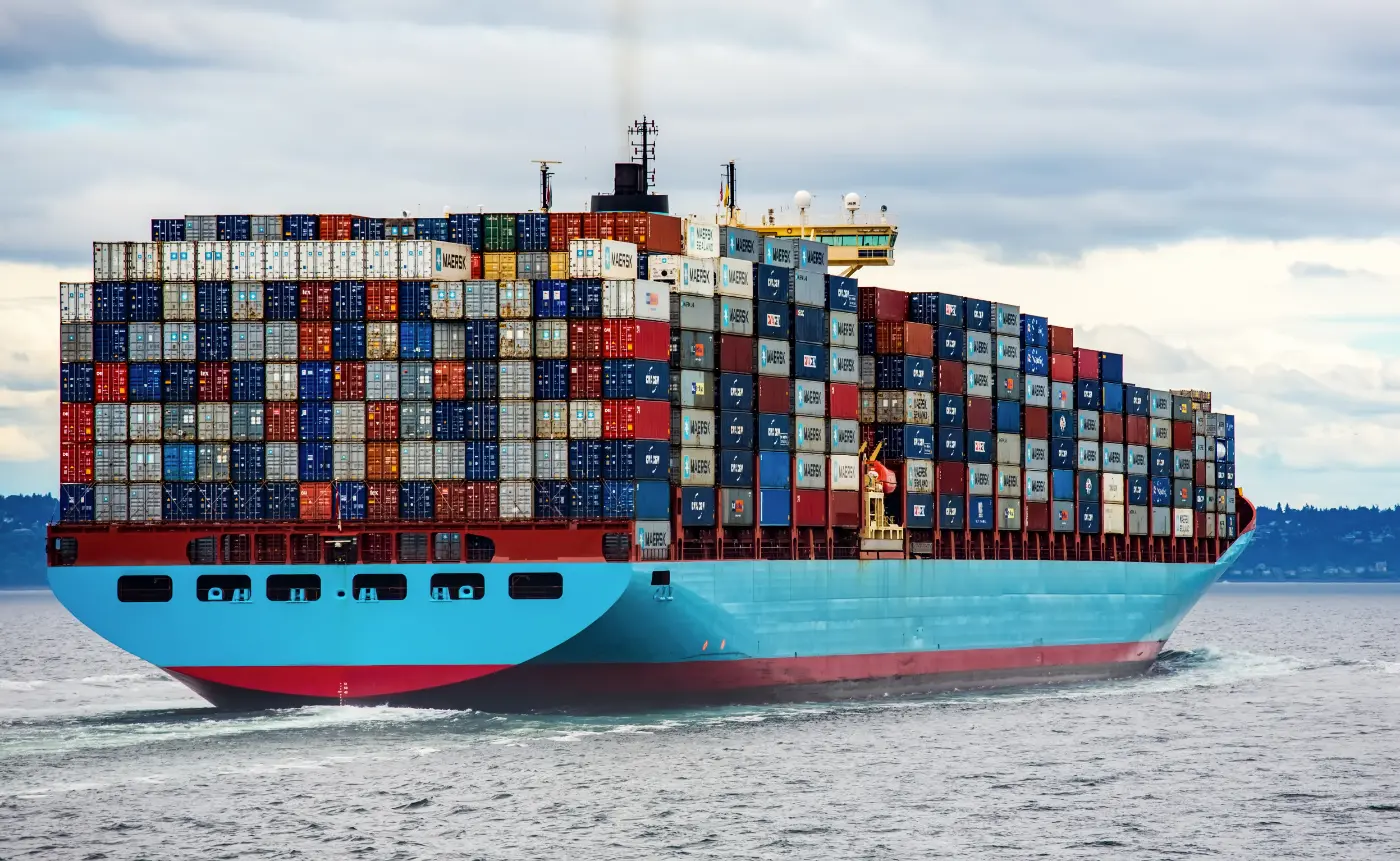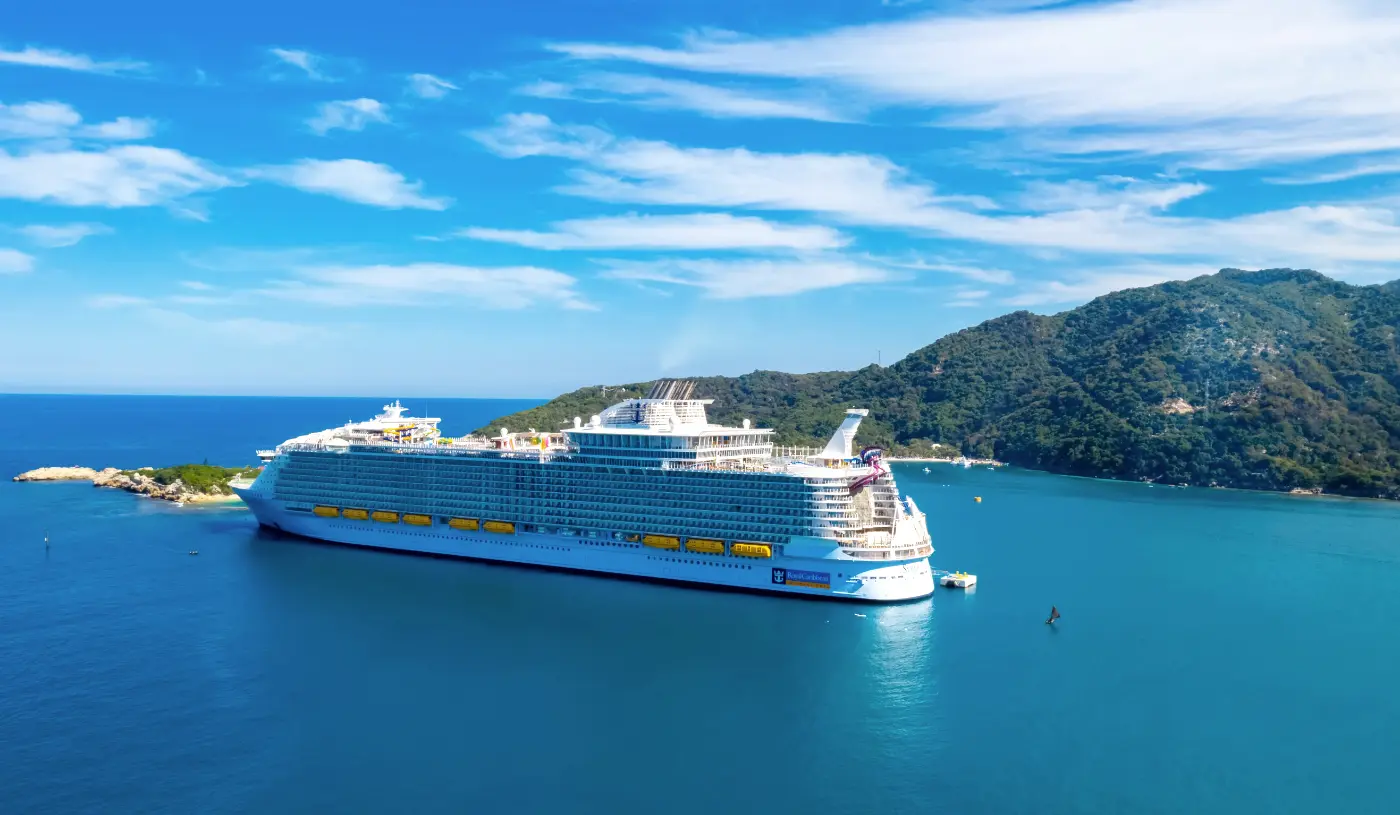The Remarkable History of the Suez Canal
Learn about the fascinating history of the Suez Canal, including its conception, construction, and the impact it had on global trade. Discover the challenges and triumphs that shaped this iconic waterway.
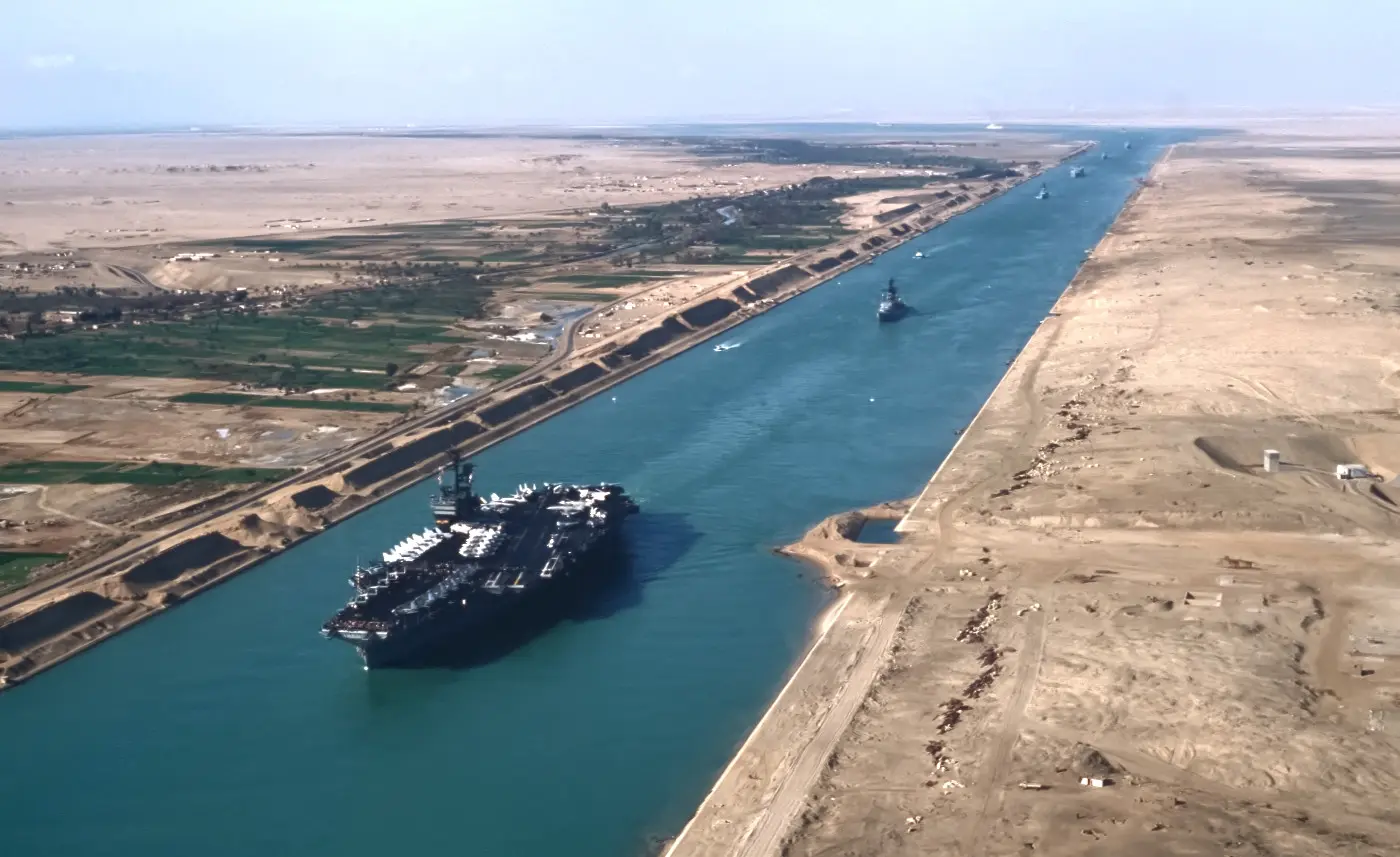
The Suez Canal is a key "artery" of world trade. Construction of the vital Suez Canal began over 160 years ago, and its history is rich and filled with technical marvels and political drama. Read on and learn more about this waterway's fascinating history.
We'll go through the basic information one needs to understand the complex history of the Suez Canal. This article will explore where the canal is located, who built it, how it was built, and how its construction was funded. We also delve into the richer history of the canal's importance as a trade route and the story behind its creation.
About the Suez Canal
The Suez Canal is a man-made, sea-level waterway facilitating approximately 10 percent of global trade. The canal is a vital part of the international economy and is often referred to as one of global trade's most important arteries. The Suez Canal is the shortest maritime route from Europe to the areas in the Indian Ocean and Western Pacific Ocean. In other words, the Suez Canal is a shortcut faster than going around the entire African Continent.
The relatively small piece of land where the Suez Canal is located (the Isthmus of Suez) is the only land connecting the African and Asian continents. Unlike the Panama Canal, the Suez Canal has no locks, as the water levels are equal on both sides. Most of the Suez Canal consists of straight lengths but has eight major bends.
Claddings of hard stone and steel protect the sides and banks of the Suez Canal from waves produced by the passing ships. On the canal's sides, mooring bollards every 125 meters offer emergency berthing options. Lights and buoys along the canal aid marine traffic by night.
Like the Panama Canal, ships using the Suez Canal must pay a toll. These tolls have become a significant source of income for the Egyptian government.
Where is the Suez Canal?
The Suez Canal connects the Mediterranean Sea and the Indian Ocean via the Red Sea. The man-made waterway runs across the Isthmus of Suez and spans across the northeastern region of Egypt. The canal is 120 miles (193 km) long and runs from Port Said in the north to Suez in the south.
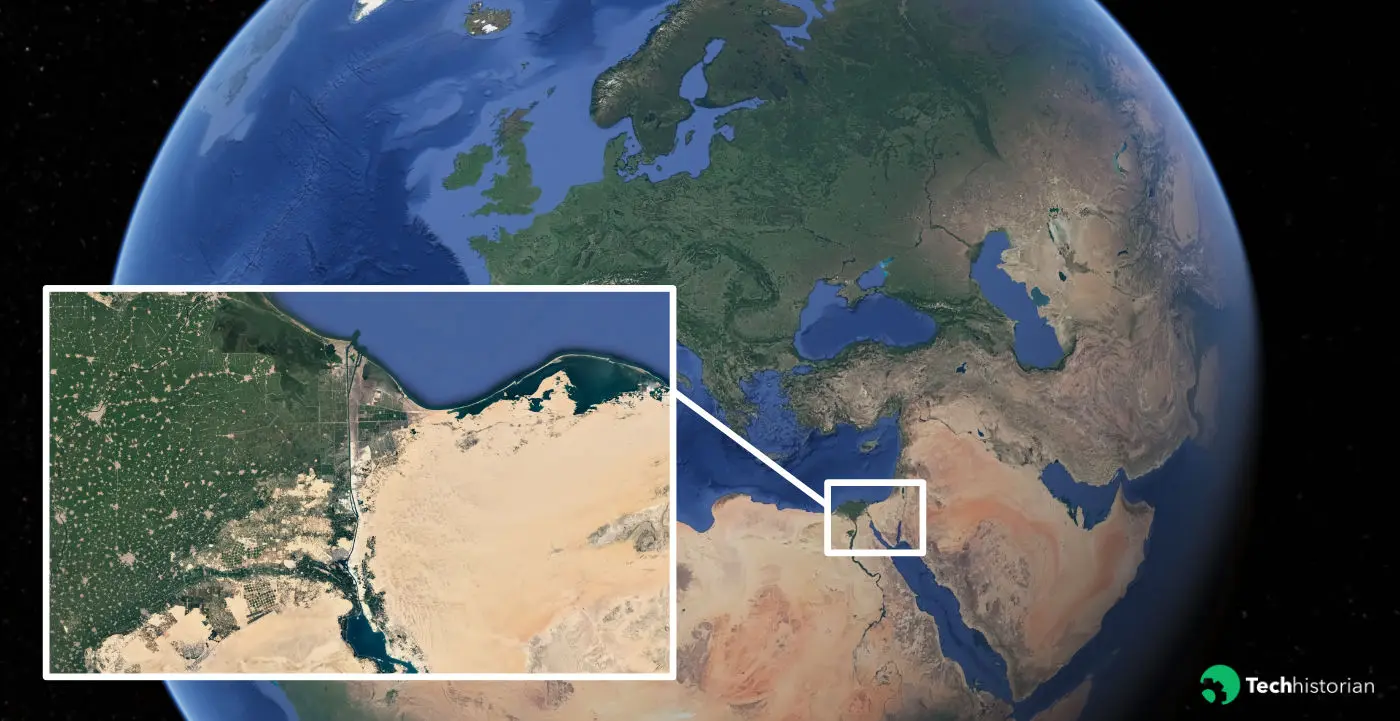
The shortest route through the isthmus is only 75 miles (121 km), but the Suez Canal does not follow this. Instead, it utilizes some of the lakes found in the area, lengthening the span of the canal.
The canal's prime location for trade makes it one of the most economically essential waterways in the world, as it is the fastest route from Europe to the Indian Ocean and Western Pacific Ocean.
Why is the Suez Canal important?
The Suez Canal is considered one of the most important waterways in the world because it facilitates international trade. Its location and size mean it connects some essential regions creating an opportune trade route for large vessels with exceptional carrying capacity.
Being the shortest path between Europe and the Indian Ocean and Western Pacific significantly benefits maritime trade. It cuts off several days of travel, compared to sailing around Africa or taking the Northern Sea Route. It also saves significant amounts of fuel.
When the Suez Canal opened, steamships were the means of maritime travel. Before the canal, the estimated steamship journey to Bombay from Brindisi and Trieste would have taken 37 days more in the 19th century. Today, shipping companies estimate that the route from Singapore to Rotterdam is 3,700 miles (6,000 km) shorter through the Suez Canal than going around Africa. That equals about nine days of sailing.
Because of this shorter route, shipping line services between Asia and Europe save around 44% carbon dioxide.
How large is the Suez Canal?
When the canal was first built, it was 102 miles long (164 km) long, only 26 feet deep (8 meters), and 22 meters (72 feet) wide at the bottom. Because the canal was so shallow and narrow when it opened in 1869, almost 3,000 groundings occurred between 1870 and 1884.
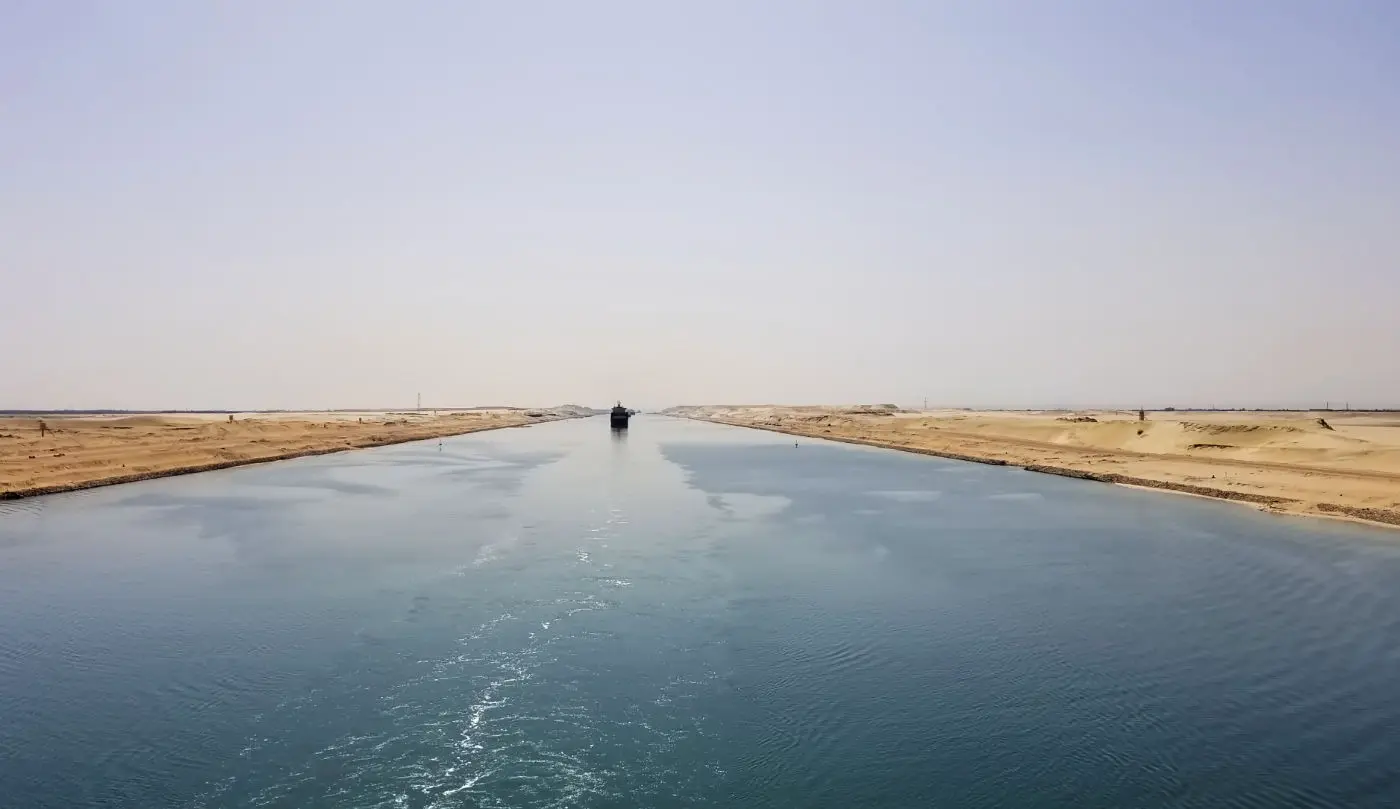
After multiple expansions and with the help of technological improvements, the Suez Canal spans 120 miles (193.3 km) and reaches depths of 79 feet (24 meters) at its deepest point. The canal is 673 feet (205 meters) wide at its widest points. The northern access channel is 22 kilometers, while the southern access channel spans approximately 9 kilometers.
The Suez Canal consists of three main parts. The first part is the northern access channel which is 14 miles (22 km) long. The canal itself follows and is 100 miles (162.25 km) long, and the southern access channel is 5 miles (9 km) long.
The History of the Suez Canal
This section outlines the significant chapters of the Suez Canal's history.
The Idea and Beginning of the Suez Canal
The very first idea of a canal connecting the Red Sea and the Mediterranean is attributed to the Egyptian Pharaoh Senusret III of the Twelfth Dynasty, who reigned for 39 years between 1878 and 1839 BC. His idea was to stimulate trade and make communication between the East and the West easier. Senusret III likely constructed a canal allowing ships from the Mediterranean to sail through the Nile River to Zagazig and then to the Red Sea via the Bitter Lakes, as those were connected at the time. Remnant of such a canal can be seen today near the city of Suez.
Millennia later, Napoleon Bonaparte and a group of engineers discovered the remains of an ancient east-west canal in 1799. The canal that Napoleon found is believed to be the work of another, later Pharaoh, Necho II, who reigned between 610 and 595 BC. It is unclear whether or not Necho II (or his successors) completed the project called the "Canal of the Pharaohs".
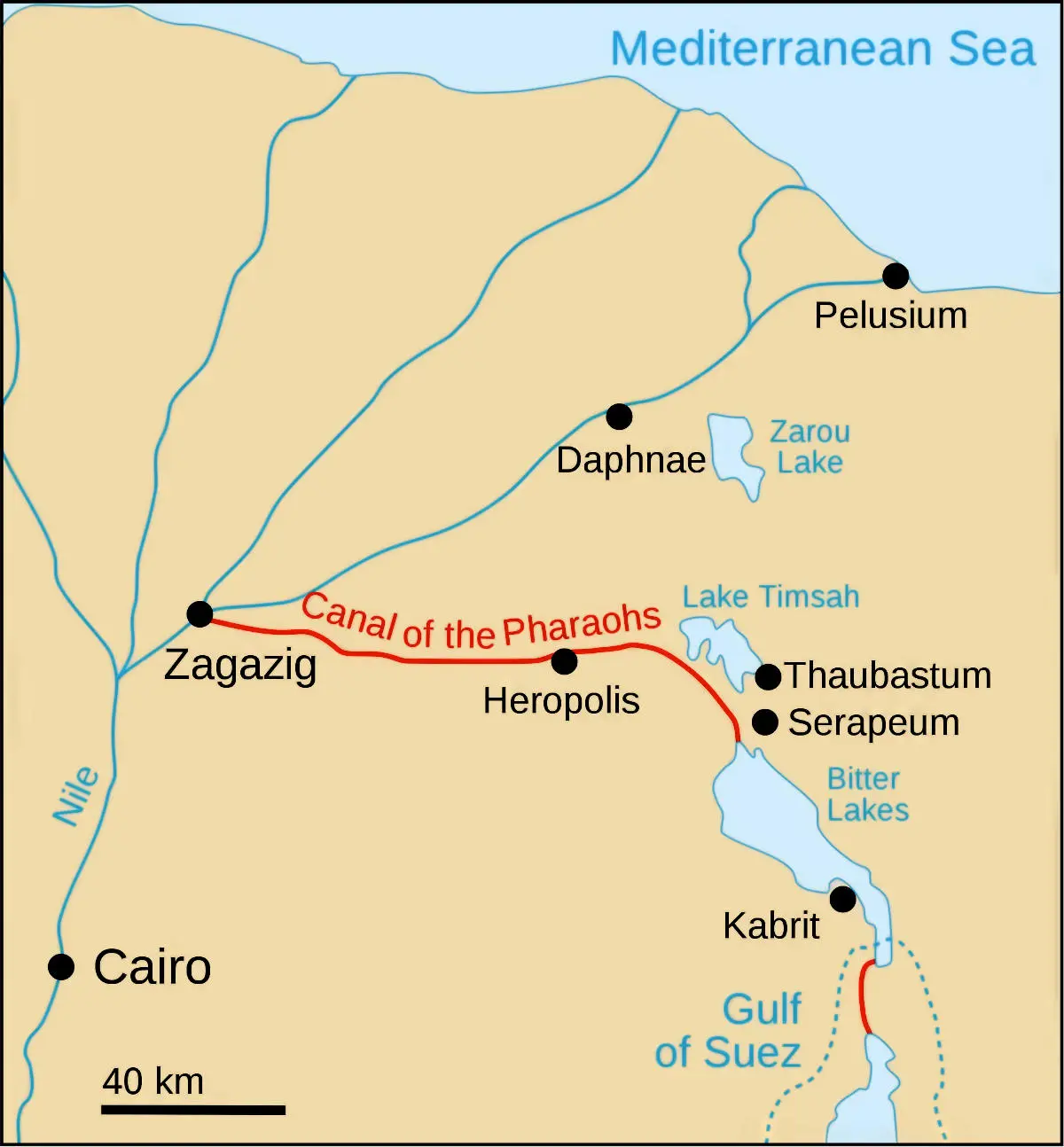
Napoleon Bonaparte would himself be further entangled in the Suez Canal's history. When he became French Emperor in 1804, he considered building a canal from north to south, connecting the Mediterranean with the Red Sea. However, he changed his mind when his engineers incorrectly concluded that a canal would require locks as they believed there was a water level difference between the two seas. That was not the case.
The idea of a shortcut through the land remained alive, however. In 1830 British General and Explorer Francis Chesney concluded that there was no water level difference and that a canal could be built. He reported this to the British Government, but nothing came of it.
But interest still grew. When Linant de Bellefonds became chief engineer of Egypt's Public Works, he also surveyed the Isthmus of Suez and made plans for the Suez Canal. Other people showed interest too. The project plans were studied in more detail in 1846 when several experts discussed how the canal could become a reality. The evidence that there was no sea level difference between the two seas was key to their discussions.
Things became real in 1854 when the first of two formal deals permitted to start a company responsible for the canal's construction. The second deal was issued in 1856, and the Suez Canal Company was formally established on December 15th, 1858.
Some countries were skeptical, however. Britain was especially against the project, as they felt their existing maritime trade routes were threatened by such a new canal. But in other parts of Europe, especially France, the Suez Canal project was successfully promoted.
Construction of the Suez Canal
The construction work of the Suez Canal began on April 25th, 1859. Workers started on the shore of what would later become Port Said. It would take ten years to complete the excavation work.
Thousands of people worked on the project of establishing the Suez Canal. Some estimate that over 30,000 people worked on the canal at any time. Until 1864, that included forced labor. Many workers died of diseases and epidemics. Diseases and poor sanitary conditions would later plague the Panama Canal as well. The number of deaths on the Suez Canal construction project is difficult to estimate, but some experts reach between 1,000 and 3,000 people.
Workers were digging by hand, with picks and baskets, at the beginning of construction. Later, steam-powered machines took over. Most of the canal was dug through sand and alluvium, except for a few places where the workers encountered rocks.
During construction, the Suez Canal Company also build towns along the canal. These supported its operation, including ports, worker housing, and other facilities.
Ten years after work began, the waters of the Mediterranean Sea and the Red Sea met on August 18th, 1869. This effectively created the Suez Canal and the important maritime waterway it is today.
According to the Suez Canal Authority, 74 million m3 of soil was dug out during construction. The cost of building the Suez Canal reached 433 million Francs - more than double the projected cost.
The Opening and Early Operations
The Suez Canal opened in November 1869 under French control. The opening was celebrated, and festivities began in Port Said on November 15th with fireworks and banquets. Around 6,000 guests celebrated the Suez Canal's inauguration ceremony two days later, on November 17th, 1869.
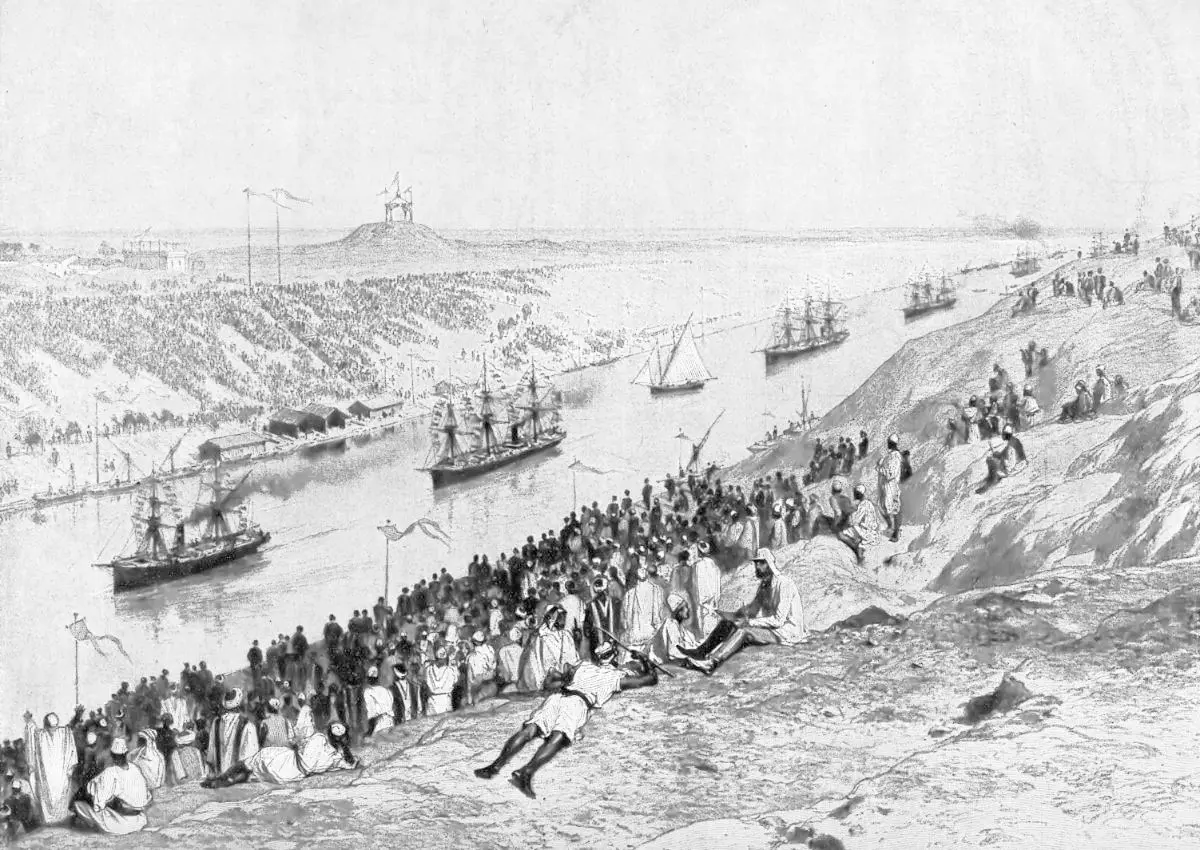
The first ship passages also began during the opening ceremonies. The French ship "L'Aigle" was officially the first ship to pass through the Suez Canal on November 17th, 1869.
But according to a myth, it was not the French who were the first to sail through the Suez Canal, but the British. According to this myth, the night before the canal was due to open, the British ship HMS Newport, captained by George Nares, navigated the Suez Canal in the cover of darkness and became the first vessel to navigate the Suez Canal.
However, this myth originates from another incident that HMS Newport was a part of. During the first passage of ships, the French ship Péluse ran aground, halting the following vessels' flow, which had to anchor in the canal. But the HMS Newport had sent out a small boat to carry out soundings, maneuvered around the Péluse, and anchored up past it for the night. The myth that the HMS Newport beat the L'Aigle to be the first through the canal appears to have its roots in this episode.
The Suez Canal Company faced financial challenges following the opening as traffic was below expectations in the first years after the opening. But revenue was boosted using a new tariff system.
After its opening, the Suez Canal significantly impacted world trade, and several nations benefitted from it. Especially Mediterranean countries, as the canal provided a much faster route to Asia and East Africa.
The Suez Crisis of 1956
An important part of the Suez Canal's history is the Suez Crisis and the Closure of the Suez Canal from 1956 to 1957.
October 29th, 1956, marks the beginning of the crisis when Israeli armed forces pushed through the Sinai Peninsula towards the Suez Canal with the assistance of its allies in this pursuit: the British and the French. The three nations had planned the invasion in advance.
The countries invaded Egypt following Nasser's announcement of the nationalization of the Suez Canal Company. In a post-World War II world, the Suez Canal was a key asset for Britain, France, and Israel. Thus, Nasser's plans caused severe geopolitical tensions.
The three nations planned for Israel to invade Egypt and then for the French and British to come in and act as peacekeepers. In reality, however, the three invading nations aimed to regain the Suez Canal and bring down the Egyptian government, which had seized the canal.
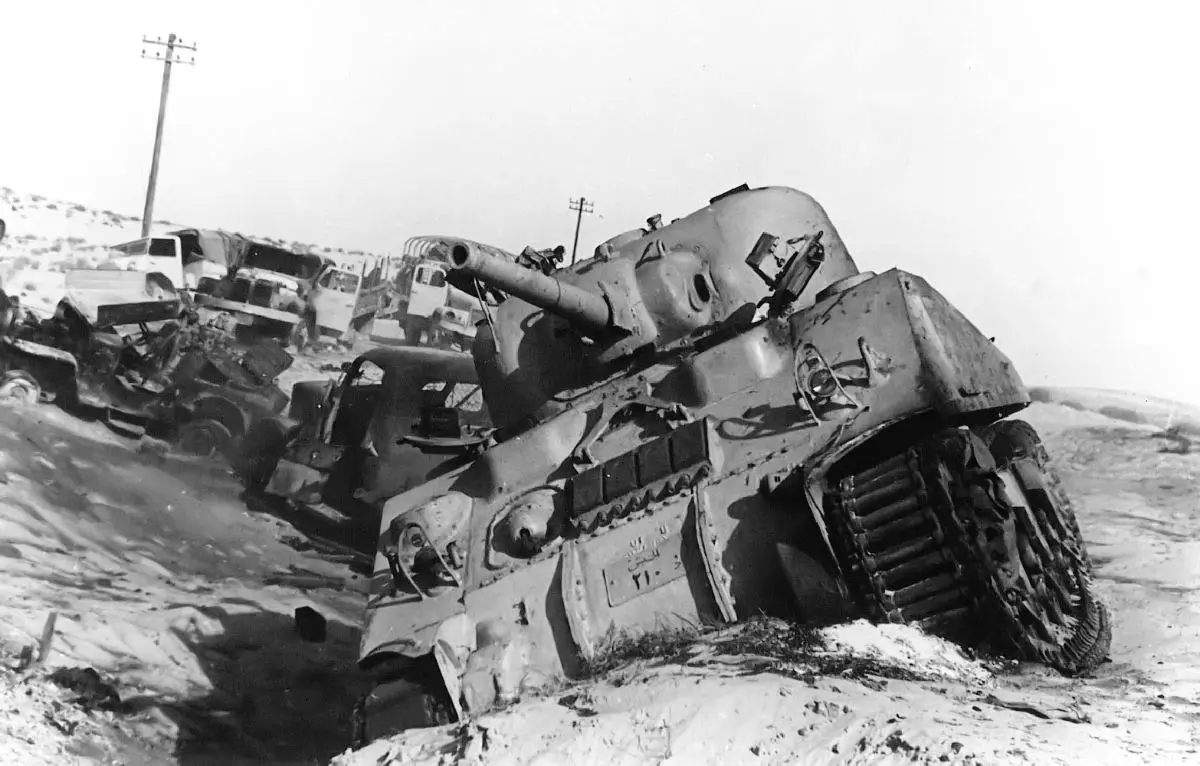
Canadian Secretary of State for External Affairs Lester B. Pearson suggested an intervention of United Nations peacekeeping forces to end the conflict. The intervention was successful, and the British agreed to withdraw their troops by the end of 1956.
During the Suez Crisis, several ships were deliberately sunk under orders from Nasser, blocking the canal. Therefore the Suez Canal was closed until April 1957 after having been cleared.
Closing the Suez Canal Between 1967 and 1975
The Suez Canal was closed for eight years, from 1967 to 1975. This resulted from a war between Egypt and Israel called the Six-Day War.
Egypt and the Egyptian president, Gamal Abdel Nasser, would not allow Israeli ships to pass through the Suez Canal immediately after the beginning of the Six-Day War. Nasser imposed a complete closure of the waterway. All shipping traffic was halted, and 15 cargo ships were trapped in the canal. They remained there until the canal's reopening eight years later in 1975.
According to the United Nations, the closed canal cost the globe $1.7 billion in lost trade and increased shipping expenses, while Egypt lost $250 million in yearly toll income.
The 2021 Obstruction of the Suez Canal
The ship Ever Given's blockade of the Suez Canal in 2021 received much attention.
On March 23rd, 2021, the large container ship ran aground in the Suez Canal, blocking all traffic in both directions. The ship turned sideways, allegedly due to strong winds.
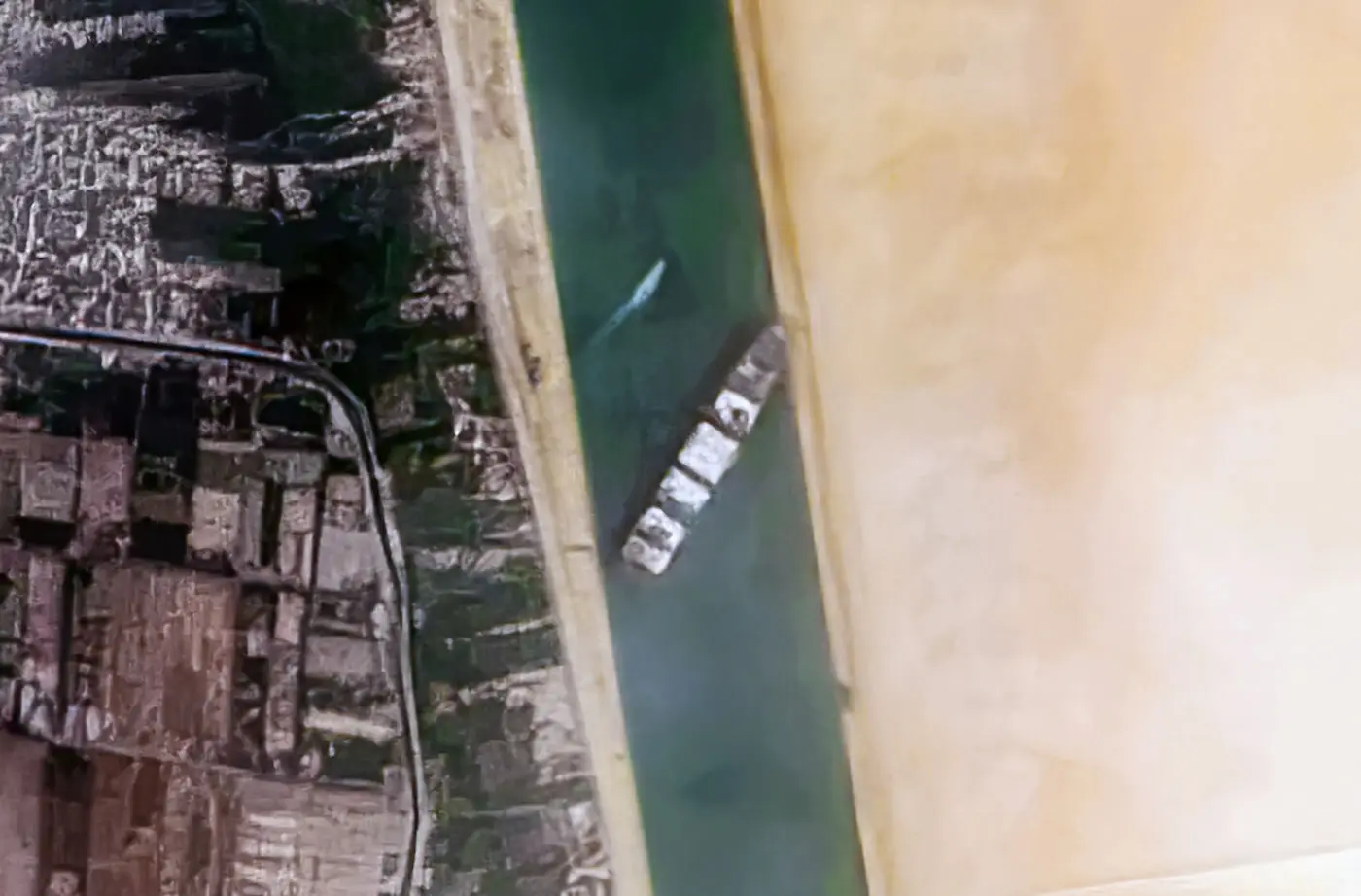
Because of the canal's importance to global trade, many experts became concerned about its blockage. Shipping companies considered rerouting their ships around Africa, extending the travel time and delaying the goods and cargo they carried.
Ever Given was refloated on March 29th, 2021, and traffic through the canal resumed immediately. Because of the incident, Egypt announced a widening of the canal to avoid similar events in the future.
The Suez Canal Today
Around 10 percent of global trade passes through the Suez Canal, and three billion USD worth of commodities travel through the Suez daily. Thus, the Suez Canal is a vital thoroughfare for world trade.
Today the Suez Canal can handle ships up to 66 feet (20 meters) in draft and up to 223 feet (68 meters) above water level. The maximum width (beam) is 254 feet (77.5 meters). Some ships, like some supertankers, are too large to use the Suez Canal.
In 2022, 22,032 ships passed through the Suez Canal, an average of 60 ships per day.
Frequently Asked Questions About the Suez Canal
Who Built the Suez Canal?
The first idea of creating a canal is attributed to the Egyptian Pharaoh Senusret III, who likely constructed a waterway through the Nile River to the Red Sea via lakes. Later, Napoleon Bonaparte envisioned a canal connecting the Red Sea and the Mediterranean from north to south.
The Suez Canal we know today was built by the Suez Company, a French-Egyptian company formed in 1858. The company operated the Suez Canal until it was nationalized in 1956 by Egyptian President Gamal Abdel Nasser.
Why Was the Suez Canal Built?
The Suez Canal was built to facilitate world trade better and shorten maritime routes. Construction began to create a shortcut between Europe, the Indian Ocean, and Western Pacific. The Suez Canal shortens sailing by around nine days compared to sailing around Africa.
How Was the Suez Canal built?
The initial building of the Suez Canal was less than pleasant. Peasants were drafted and forced to dig with picks and baskets. As technology improved, dredgers and steam-powered shovels relieved some of this manual labor. Forced labor was also banned in 1864.
Surveyors mapped out the canal's route according to the land material to make construction as simple as possible. Thus, most of the canal was built through sand or alluvium rather than rock.
How Much Did the Suez Canal Cost, and Who Funded It?
When the Suez Canal was completed in 1869, the total costs had accumulated to 433 million Francs. This was more than double what was initially planned.
The Suez Company covered the costs of the canal's construction by issuing shares and bonds.
How Big Can the Ships Passing Through the Suez Canal Be?
The so-called Suezmax ships are the largest ships that can pass through the Suez Canal. Suezmax refers to a set of vessel dimension restrictions that the canal can handle.
Because of the canal's limited capacity, the most important factors are the ship's beam, draft, height, and length.
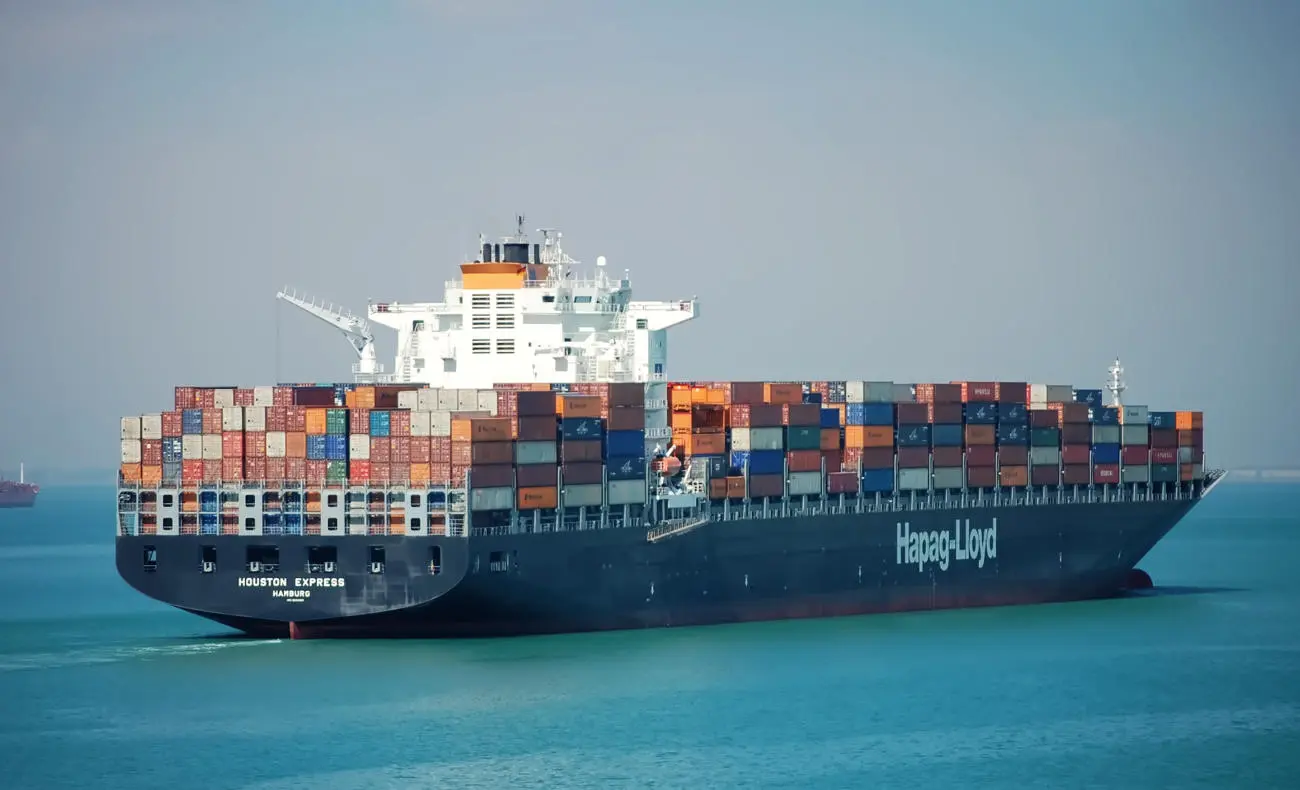
The largest ships that can use the Suez Canal must be a maximum of 1,300 feet (400 meters) long, have a maximum beam of 254 feet (77.5 meters), 164 feet (20 meters) draft, and a maximum height of 223 feet (68 meters) because of the Suez Canal Bridge.
Other canals use a similar taxonomy, including the Panamax for the Panama Canal.
How many ships use the Suez Canal?
According to Statista, 22,032 ships sailed through the Suez Canal in 2022. That is around 60 vessels each day.
In the first full year of operation, only 486 ships used the Suez Canal. That equals less than two each day.
Interesting facts about the Suez Canal
- The Suez Canal, built in 1859, took four years longer to build than anticipated due mainly to climatic difficulties, a cholera epidemic, and labor troubles.
- This time cut is approximately nine days for ships traveling from Asia to Europe, compared to sailing around Africa.
- Construction of the Suez Canal involved excavating and dredging 97 million cubic yards (74 million cubic meters) of sediments.
- Only 486 ships used the Suez Canal in its first full year of operation.
- When the Suez Canal opened, the channel was only about 26 feet (8 meters) deep.
- The ancient Egyptian Pharaohs first thought of creating a waterway similar to the present-day Suez Canal.
- The Suez Canal handles cargo worth up to $3 billion each day, according to The International Chamber of Shipping.
Also read:
